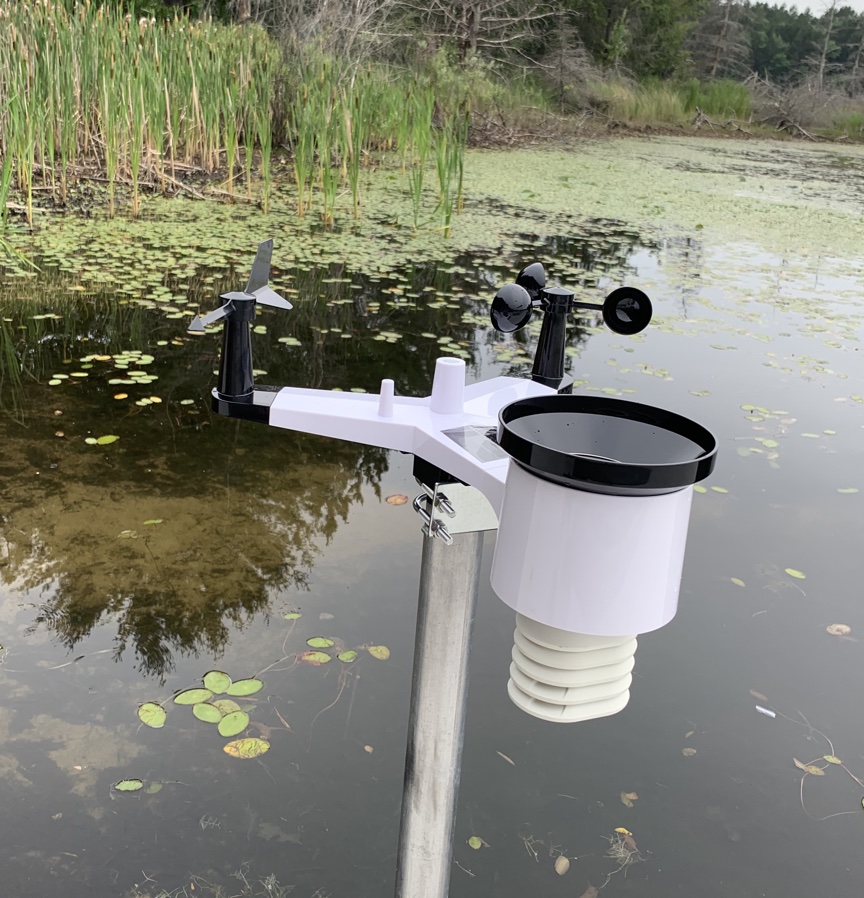Amazon Prime Day got me again. I found this weather station (Ambient Weather WS-2902C WiFi Smart Weather Station) for $10 off (I think). What attracted me about this device was not so much the capacity to collect multiple weather variables that would appear on a local display, but the wifi connection available with this model. Owners of certain weather stations are part of a network of devices that allows the integration of data – kind of a citizen science concept (Ambientweather.net). I sometimes write about data literacy and the types of projects K12 educators might implement to collect and analyze data and this device at a reasonable price would work great for such projects.
I have encountered one challenge. I successfully assembled the weather station (not that difficult) and established a connection between the station and the local monitor. However, I did not read the product description carefully and missed the part about the 2.4GHz wifi router. My router operates at 5GHz and should be modifiable to also activate a 2.4 radio, but the online instructions for the model we have said this should be possible. However, the online product description doesn’t match what appears when I connect to the router. We have a web extender that offers both 2.4 and 5 channels, but mesh networks are not accepted by the Ambient product. I will have to discuss this inconsistency with technical support. The router is part of the modem we rent from our DSL provider so some additional research will be required.


I did get the feed working. Here is access to the data from my device as it is being collected.
66 total views

You must be logged in to post a comment.